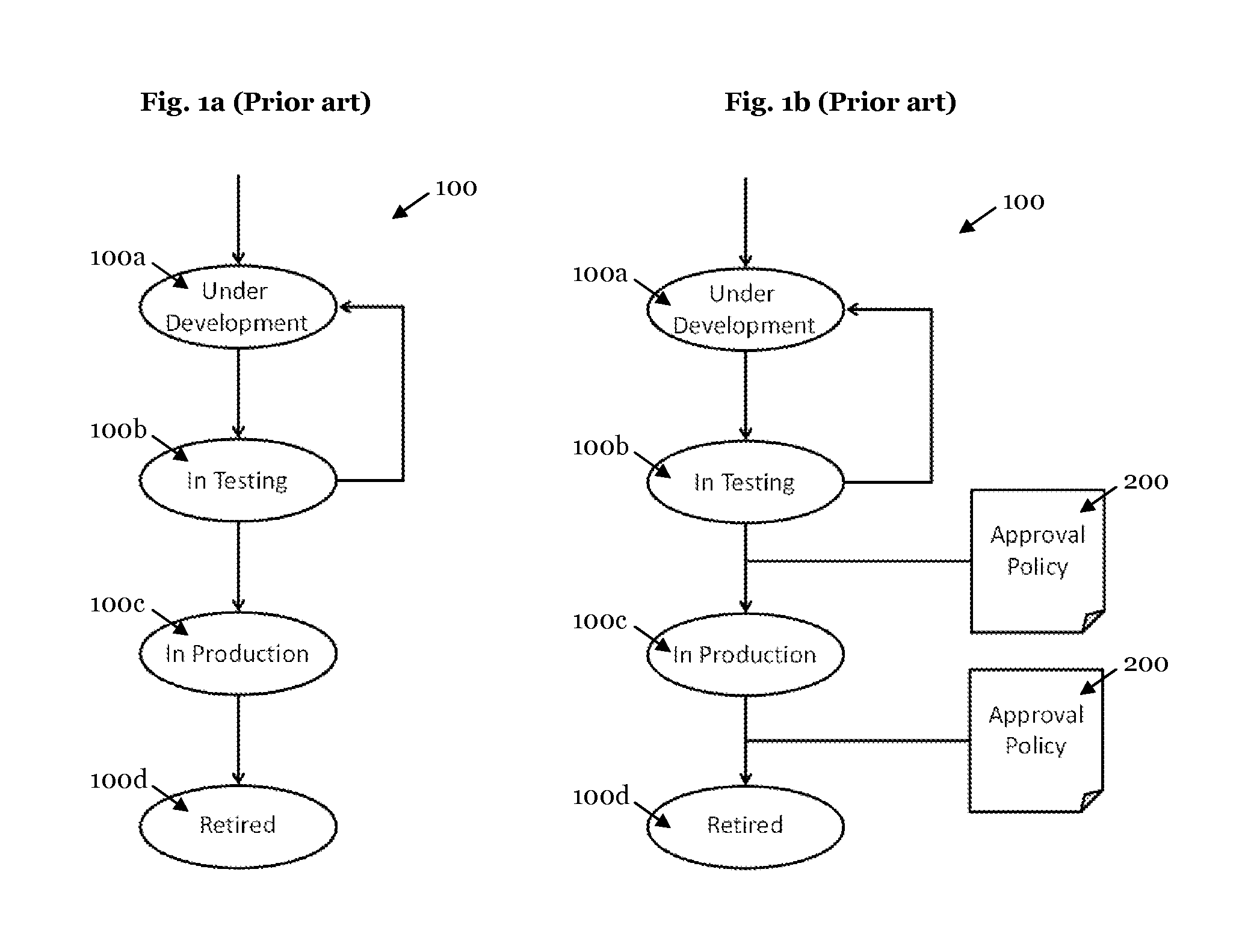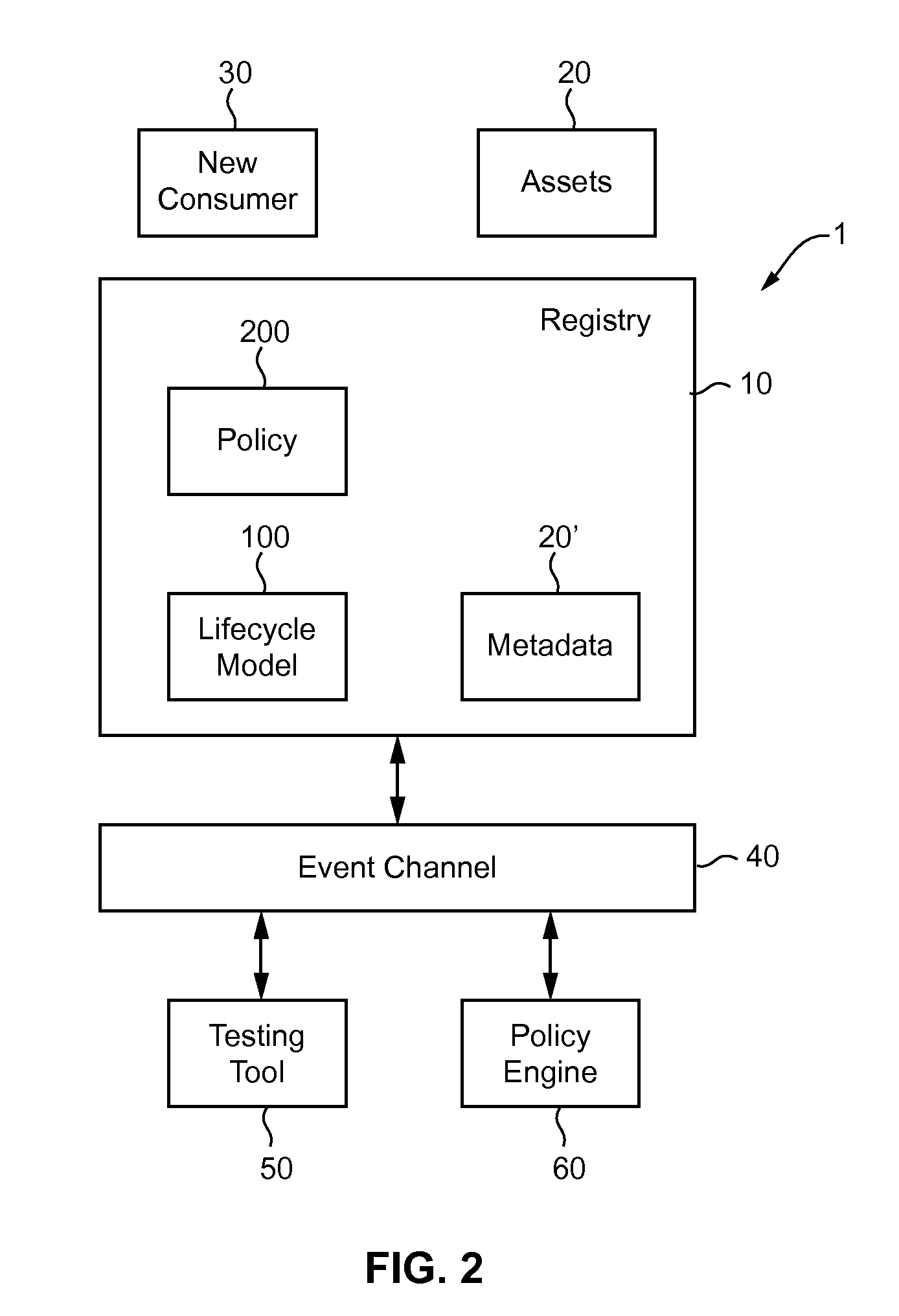Lifecycle management system with conditional approvals and corresponding method
a lifecycle management and conditional approval technology, applied in software maintenance/management, instruments, software deployment, etc., can solve the problems of failure of the overall computing system, failure to disclose the integration of approval processes with lifecycle management, and complex and difficult control of the correct transition of computing components from one lifecycle state to the next, so as to improve extensibility and time-consuming processing
- Summary
- Abstract
- Description
- Claims
- Application Information
AI Technical Summary
Benefits of technology
Problems solved by technology
Method used
Image
Examples
Embodiment Construction
[0041]Managing the lifecycle of computing components, i.e. controlling that the computing components only transition from one lifecycle state to the next in a well-defined manner, is a central prerequisite for ensuring a proper operation of the computing system implemented by the computing components. Certain example embodiments depart from the simple concept of either approving or rejecting a requested lifecycle transition (as was explained further above in connection with FIGS. 1a and 1b) by introducing the concept of conditional approvals.
[0042]For example, when it is requested to move the status of a computing component (hereinafter also referred to as “asset”) into an “In Production” lifecycle state, the approver could generally agree with the requested transition, but may want additional tests to be executed before moving the asset. Instead of having to reject the requested lifecycle transition (which would involve a complete additional iteration in the approval process), the ...
PUM
 Login to View More
Login to View More Abstract
Description
Claims
Application Information
 Login to View More
Login to View More - R&D
- Intellectual Property
- Life Sciences
- Materials
- Tech Scout
- Unparalleled Data Quality
- Higher Quality Content
- 60% Fewer Hallucinations
Browse by: Latest US Patents, China's latest patents, Technical Efficacy Thesaurus, Application Domain, Technology Topic, Popular Technical Reports.
© 2025 PatSnap. All rights reserved.Legal|Privacy policy|Modern Slavery Act Transparency Statement|Sitemap|About US| Contact US: help@patsnap.com



